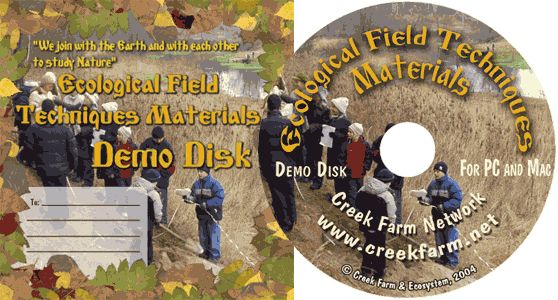|
| Our Field Ecology Center published more than
180 methodical materials for nature studies. Some of them are in English: |
|
|
|
Making a Herbarium
© Alexsander S. Bogolyubov,
Nadejda S. Lazareva, Russia, 2002
© Michael J. Brody, USA,
2003
 In this manual we
describe the guidelines for making a collection of herbaceous plants, specialized
equipment and its use, procedures for collection, drying, assembly and storing herbaria,
including herbaria of some complex groups of plants. Included is information on techniques
for drying, making collections of fruits and seeds, mushrooms, mosses and lichens. In this manual we
describe the guidelines for making a collection of herbaceous plants, specialized
equipment and its use, procedures for collection, drying, assembly and storing herbaria,
including herbaria of some complex groups of plants. Included is information on techniques
for drying, making collections of fruits and seeds, mushrooms, mosses and lichens.
This field study has instructional video
featuring real students conducting the ecological field techniques in nature. Each video
illustrates the primary instructional outcomes and the major steps in accomplishing the
task including reporting the results.
Why should students make a herbarium?
We consider it important for students to have hands-on experience with
herbariums when they:
make a list of plant species found within a certain area,
determine "areals" (areas of growth) of species,
identify ecological preferences of species,
study peculiarities of species, for instance, their geographical or environmental
variability and when they
describe new species.
Please take into consideration that a herbarium is not always made according to all of
the guidelines described here. A working herbarium can change in relation to the
objectives of the field activity. For example, only the necessary parts of plants may be
collected, such as leaves or flowers. Other botanical collections may also be compiled,
such as leafless branches of trees or seeds.
There are not many places on this planet left untouched by human activities, so
almost any plant species can be eliminated through excessive collection. We recommend that
students learn how to make herbaria using prolific species and abundant plants. While
collecting plants, make sure that the specimens you want to pick up are not the only ones
around.
Do not collect rare plants unless absolutely necessary! If you decide to make a
herbarium of rare plants you should follow these rules:
Do not dig out a whole perennial plant, a part of one sprout is usually enough;
Collect annual plants after seed dissemination;
Prior to collection make sure that the plant is not the only one in the area.
Before starting a botanical study with students, you should explain the specific
objectives of the activity and collection techniques in full detail so that students do
not focus on and collect only beautiful plants.
How to collect plants for a herbarium
Essential equipment should be prepared before the collection of herbarium
begins: 1) herbarial net with a string; 2) herbarial folder; 3) digger; 4) paper for
lining; 5) paper for labels; 6) knife; 7) filter paper; 8) cotton cloth.
The herbarial net is designed for the prolonged drying of plants. It consists of
two wooden frames with transverse crossbars and a net that is stretched on them (Picture
1). The frame size is approximately 35 cm x 50 cm. The frame can be made without
crossbars, although in this case, the net will wear out quickly and plants will be not be
as spread out they could be. A strong cord is required for tightening the herbarial
net; it should be about 3.5 m long.
A herbarial folder is required for the collection of plants in the course of an
excursion. Its size is about the same as the herbarial net. It consists of two veneer
boards, thin plywood or strong cardboard, where a string or small straps run through the
hole (Picture 2). It can be tightened or tied up and have a handle in order to make it
easier to carry.
Paper linings are necessary in order to interlay plants chosen for the herbarium.
Any highly absorbent paper can be used for these purposes, although newspapers work very
...
This was only the first page from the manual and its full version you can see in the
Ecological Field Studies Techniques Video 4CD Set:
It is possible to purchase the complete set of 40 seasonal Ecological Field
Studies Techniques Video (in mpg format) in an attractive 4 compact disk set.
These compact disks are compatible with Mac and PC computers.
The videos are suitable for individual student or whole class instruction. To purchase the complete 4CD set
write to ecosystema1994@yandex.ru in a free form.

Ecological Field Studies Demo Disk:
We also have a free and interesting demonstration disk that explains our ecological field studies approach.
The demo disk has short excerpts from all the seasonal field study videos as well as sample text from all the teacher manuals.
The disk has an entertaining automatic walk through which describes the field study approach and explains how field studies meet education standards.
You can also download the Demo Disc from ecosystema.ru/eng/eftm/CD_Demo.iso.
This is a virtual hybrid (for PC and Mac computers) CD-ROM image (one 563 Mb file "CD_Demo.iso").
You can write this image to the CD and use it in your computer in ordinary way.
You also can use emulator software of virtual CD-ROM drive to play the disk directly from your hard disk.

|







